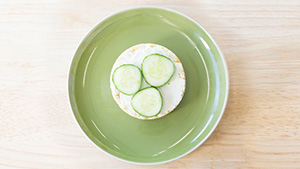THE EATWELL GUIDE
Eat healthy, eat well.
The Eatwell Guide – putting it into practice
Healthy eating is about consuming the right amount of food for your energy needs and the right balance of foods to make sure your body gets all the nutrients it needs. The UK Government’s ‘Eatwell Guide’ shows the different types of foods and drinks needed for a healthy and balanced diet, and in what proportions. It is designed for most people (except children under the age of two who have different nutritional needs) – whether you’re a healthy weight or overweight – and whatever your diet (43)! Children aged two to five should gradually move to eating the proportions outlined in the Eatwell Guide.

The Eatwell Guide divides foods and drinks into five main groups. Try to choose a variety of different foods from each of the groups to help get the wide range of nutrients your body needs to stay healthy and work properly. To take a closer look at how the ‘Eatwell Guide’ can help, please click here to download the pdf or head to NHS Choices to view the interactive guide.
The amount of food (i.e. portion size) you need varies depending on a range of factors including age, sex and body size and the amount of physical activity you do. Please remember that your doctor or a registered dietitian can advise you on the best diet for your individual needs. Further information on portion sizes can be found here.
The UK Government recommends that calories and nutrients should be spread throughout the day and as a guide, suggests that 20% of your total calorie intake should be consumed at breakfast, 30% at lunch, 30% at dinner with 20% leftover for drinks and snacks (20:30:30:20) (52).
For a 2000 calorie per day diet, this 20:30:30:20 recommended ratio could take the form of the following guide breakdown:
- 400 calories for breakfast
- 600 calories for lunch
- 600 calories for dinner
- 400 calories for drinks and snacks
We have created a selection of tasty recipes that are in line with the principles of the ‘Eatwell Guide’ and which are suitable for an average adult in the context of a 2000 calorie per day diet. The recipes include a number of examples that you can pick and choose from and have been designed to fit with the 20:30:30:20 recommendation for you to enjoy!
For advice on how The Eatwell Guide can help you make informed choices for you and your family watch our video with dietitian and mum Helen Bond. Also, in February 2020, the Vegan Society published its adaption of the Eatwell Guide, including tips on balancing food groups and using fortified foods and supplementation which can be viewed here.
HEALTHY FOOD RECIPES
Breakfast – Click here to download the recipes as a PDF
Lunch – Click here to download the recipes as a PDF
Dinner – Click here to download the recipes as a PDF
Snacks – Click here to download the recipes as a PDF
| SUGAR FACTS |
|---|
| The daily average calorie intake for women should be around 2,000 and for men 2,500 (53). |
| Your body doesn’t distinguish between sugars used in manufacturing or in the kitchen, and those sugars found naturally in fruits and vegetables. For example, sucrose in an apple is broken down in exactly the same way as the sucrose in your sugar bowl. However, the rate of which the sugar (sucrose) is absorbed can vary depending on if the source is a solid or liquid food, for example, in an apple or apple juice. |
| The recommended Reference Intake for total sugars as part of your diet is 90g a day for adults. This Reference Intake is based on the requirements for an average female with no special dietary requirements and an assumed energy intake of 2,000 calories (44). |



